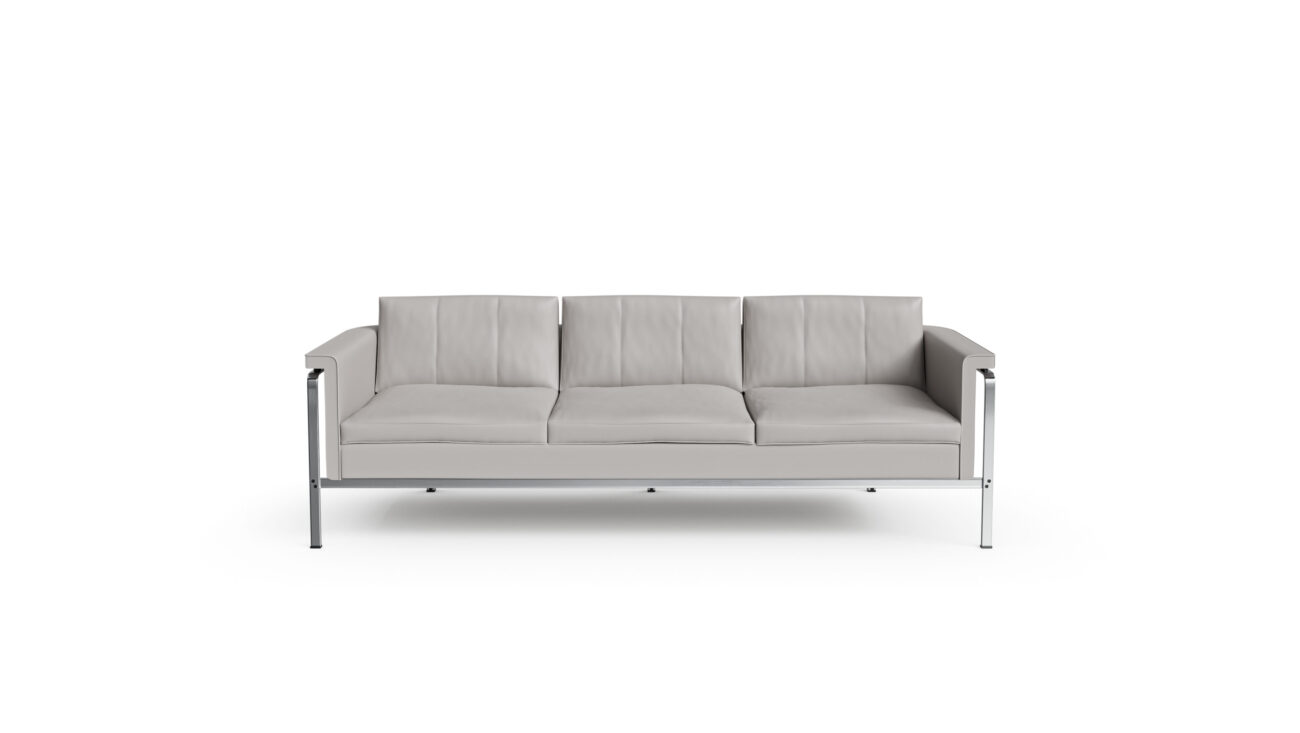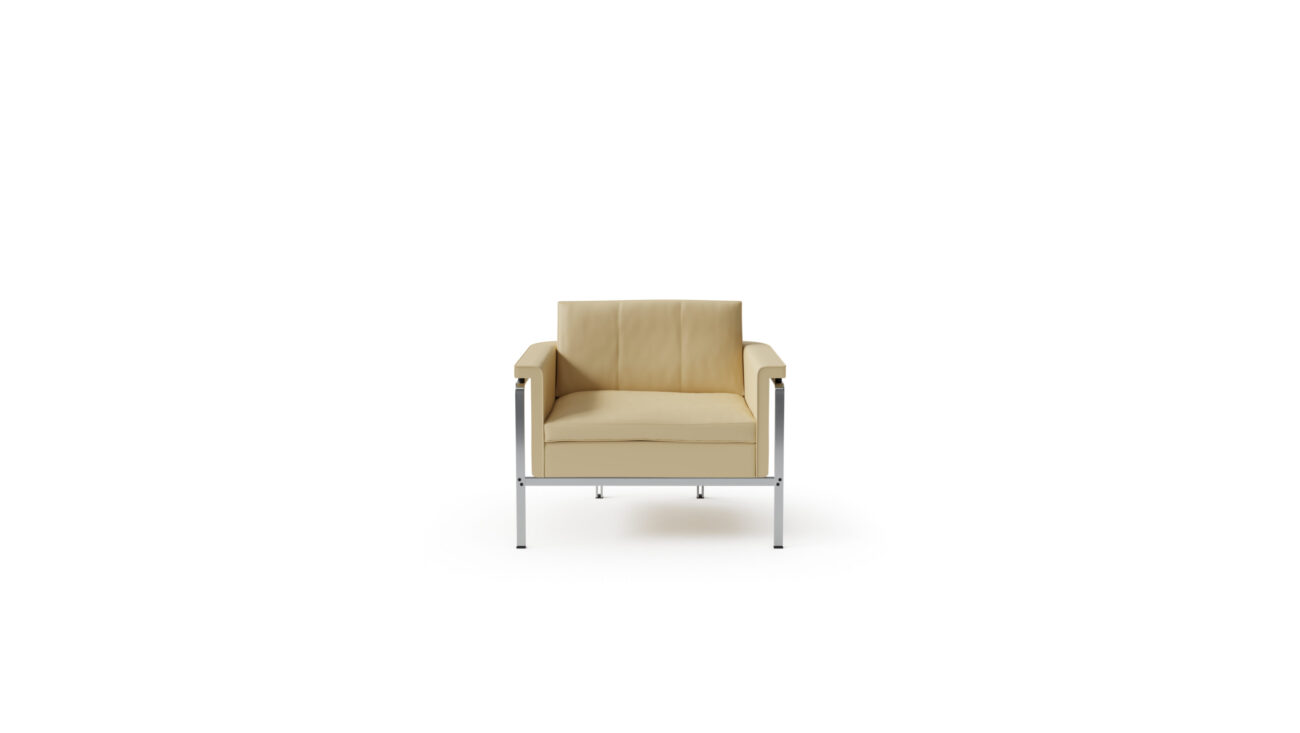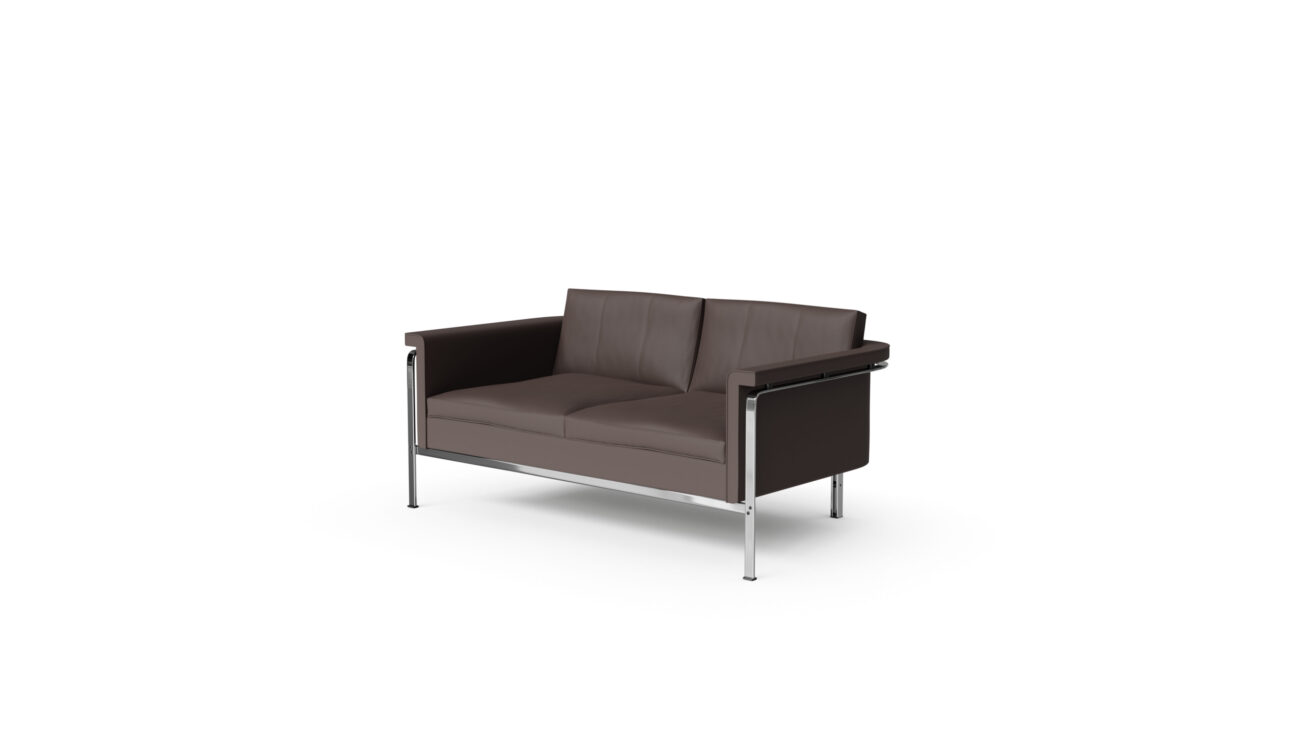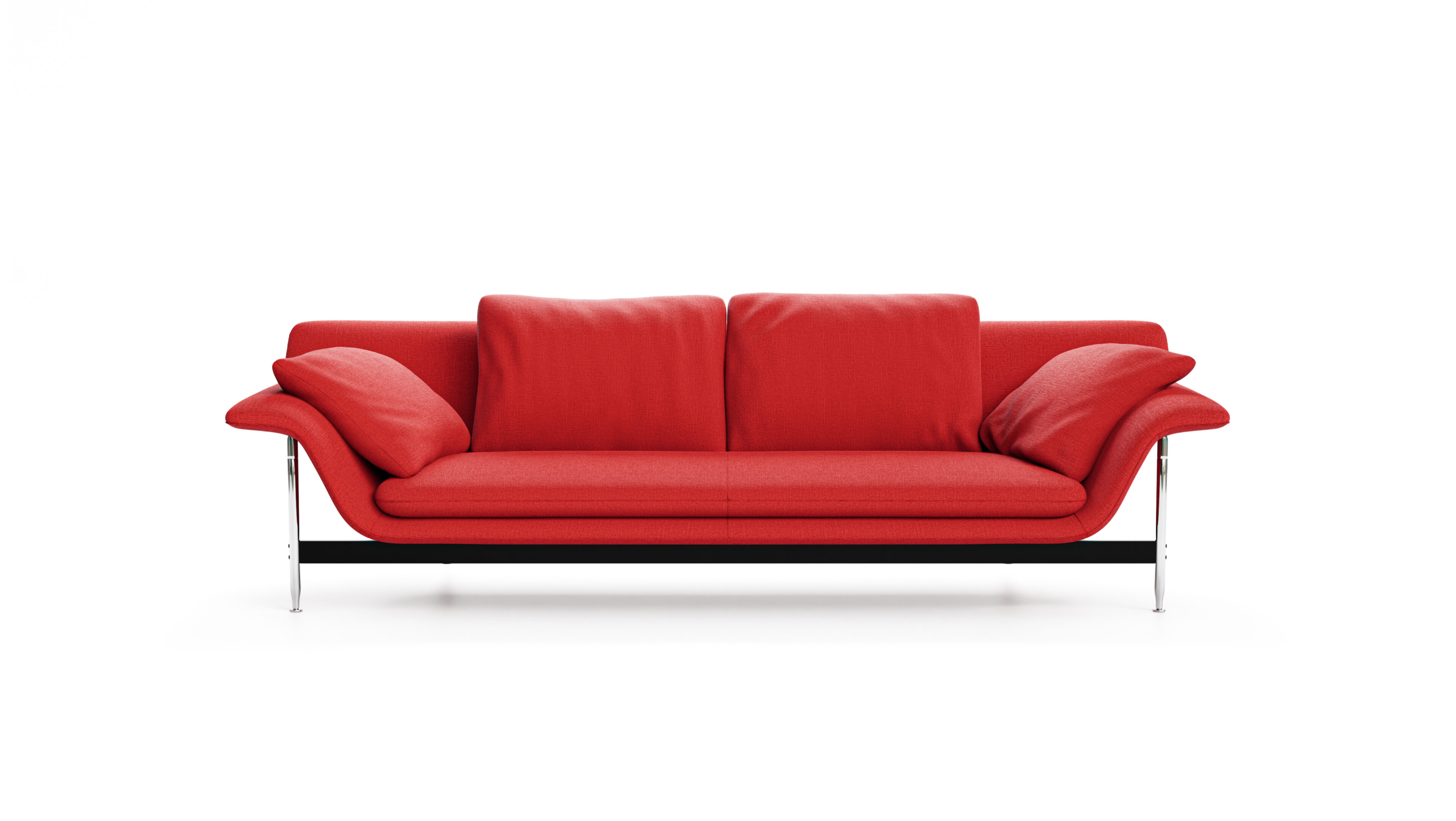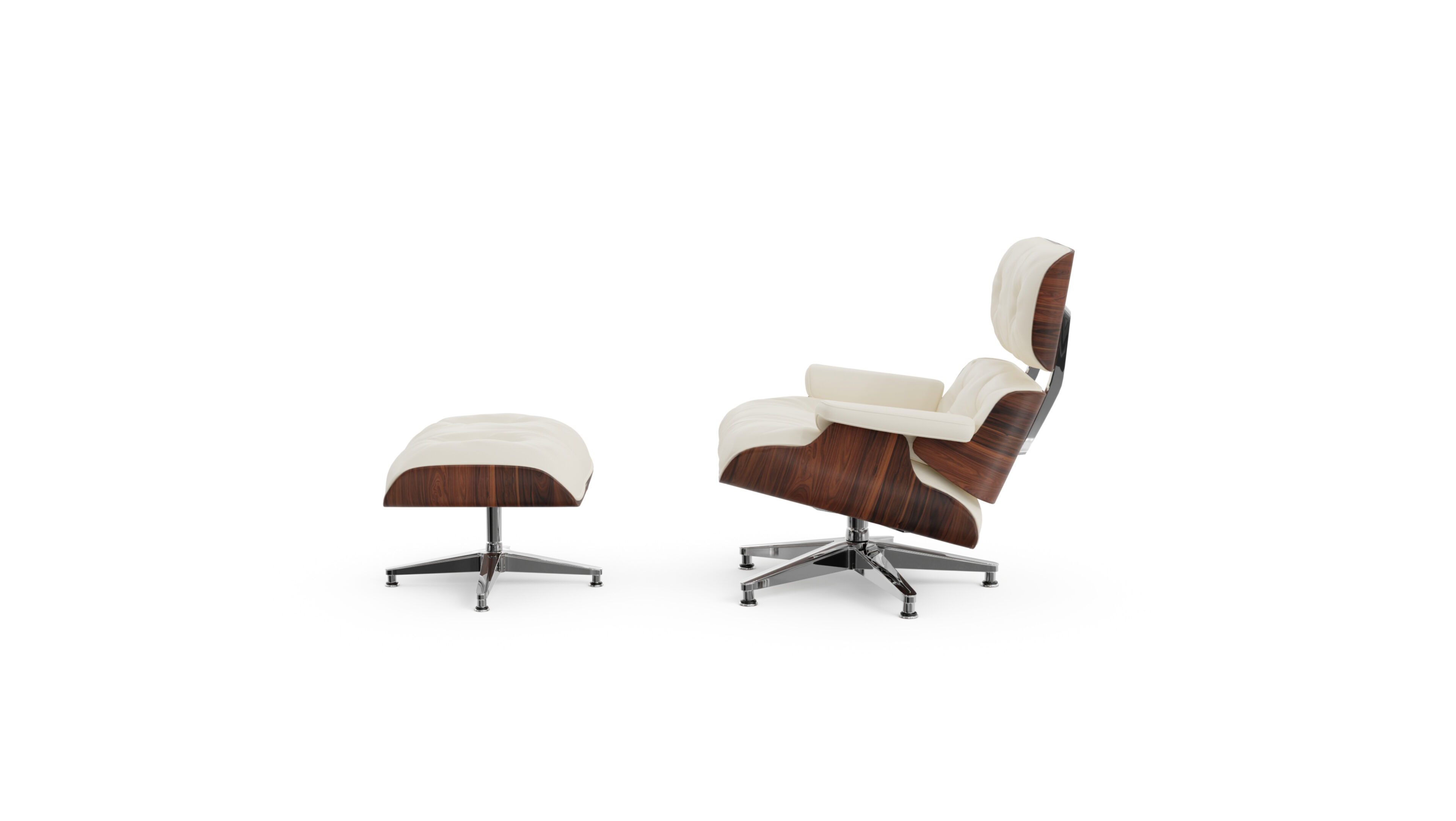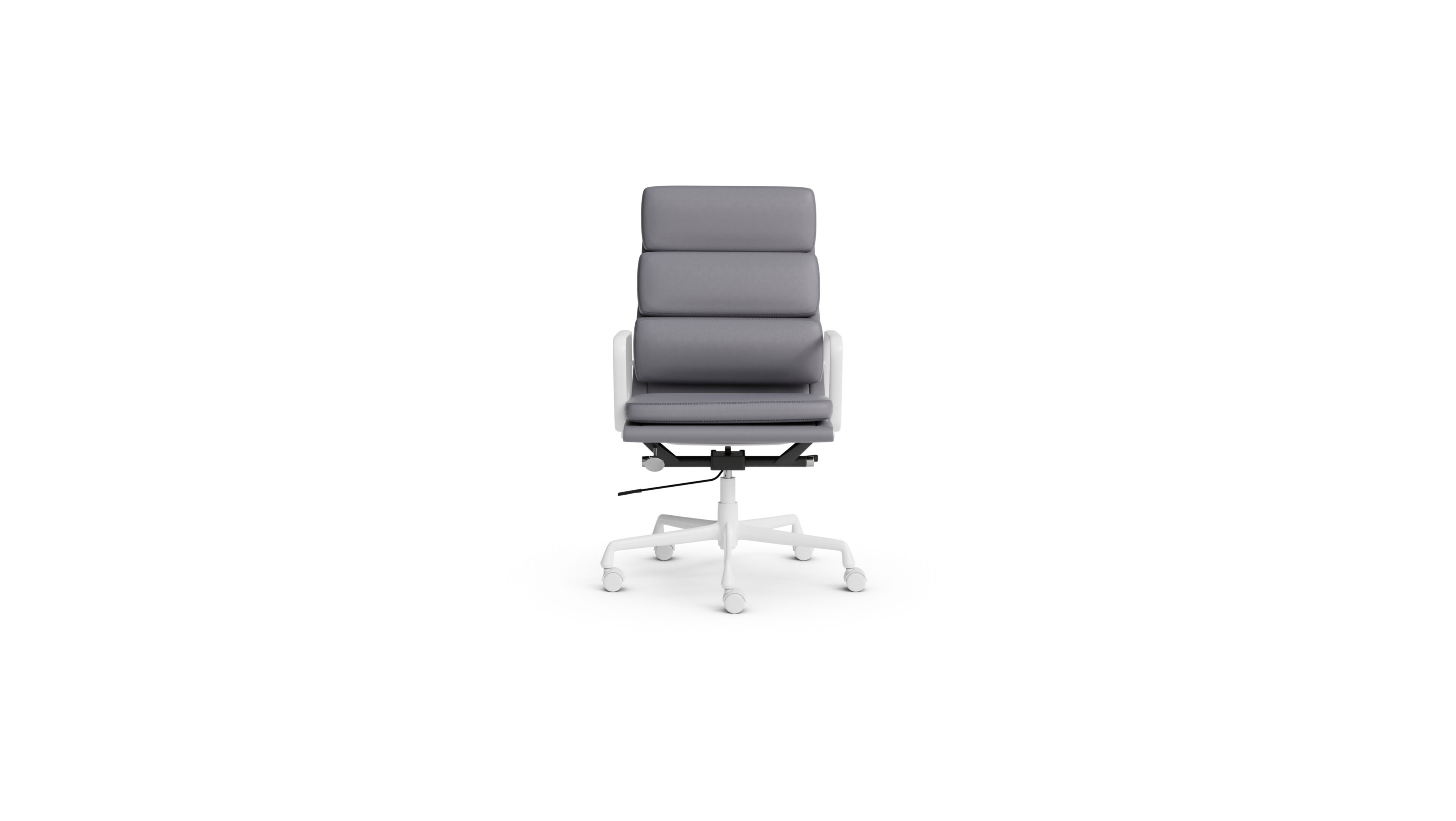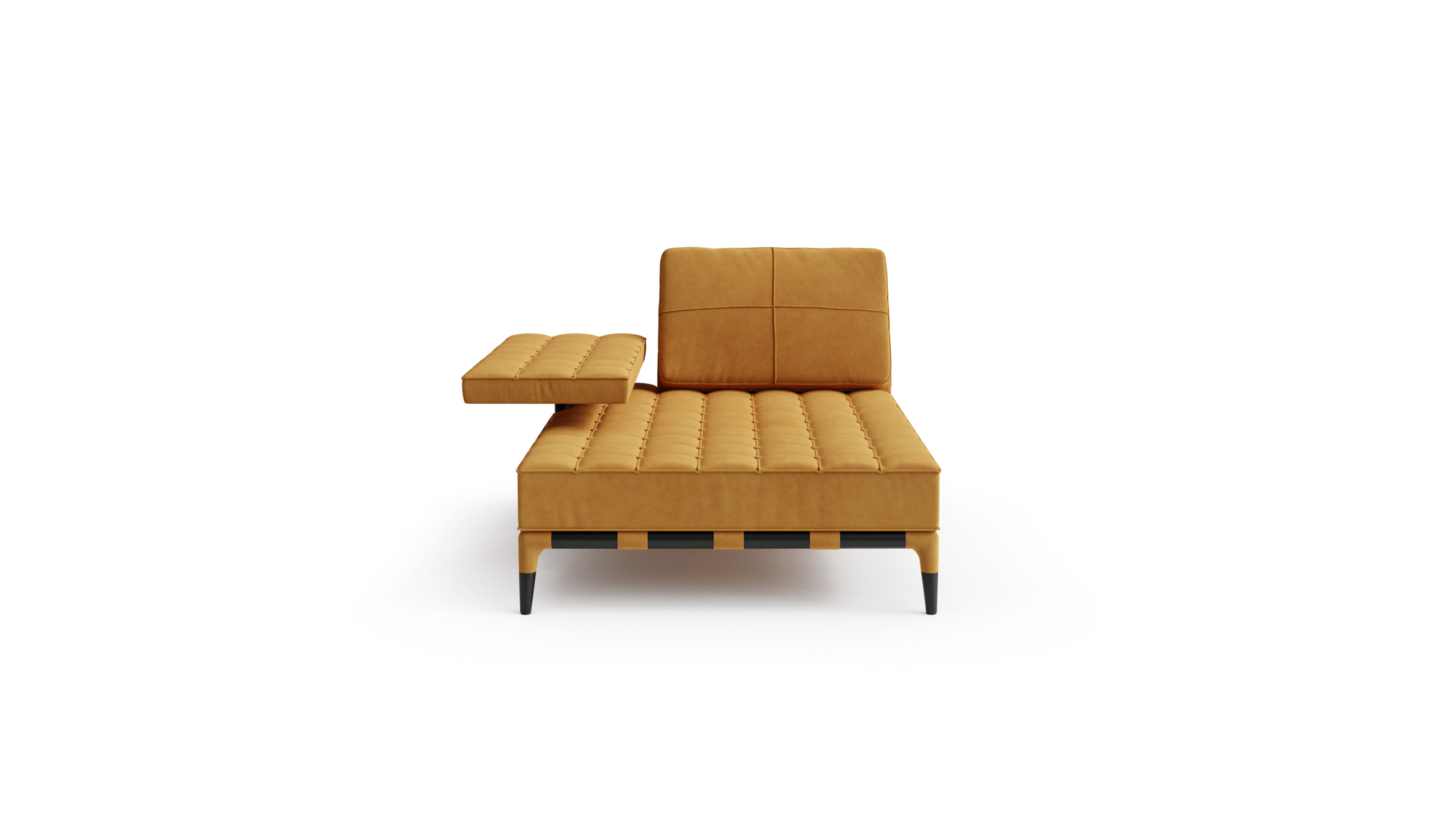
Horst Brüning Biography
Horst Brüning (1934-2022) was a German architect and furniture designer known for his minimalist approach to seating design. He began his career after studying architecture at the Technical University of Braunschweig. Brüning is renowned for his 691 series for Kill International, including the 6911 chair, 6912 two-seater sofa, and 6913 three-seater sofa (1967). These pieces feature a distinctive, exoskeletal chrome-plated flat steel frame with leather upholstery. Brüning’s designs combine architectural precision, industrial materials, and comfort.
Early Life and Education
Born in 1934 in Germany, Horst Brüning grew up in a period of significant change and reconstruction in post-war Europe. This context likely influenced his later minimalist and functional approach to design. Brüning pursued his education in architecture at the Technical University of Braunschweig, one of Germany’s oldest technical universities known for its strong emphasis on engineering and design. This architectural background would prove instrumental in shaping his approach to furniture design, giving him a unique perspective on structure and form.
Career and Achievements
After completing his studies, Brüning embarked on a career that would span both architecture and furniture design. His architectural training informed his furniture designs, which often featured strong, clean lines and a focus on structural elements. Brüning’s work gained significant recognition in the 1960s, a period of great innovation in furniture design.
Brüning’s most notable achievement came in 1967 with the creation of the 691 series for Kill International, a German furniture manufacturer known for its high-quality modernist designs. This series, which included the 6911 chair, 6912 two-seater sofa, and 6913 three-seater sofa, exemplified Brüning’s design philosophy. The distinctive exoskeletal chrome-plated flat steel frame combined with leather upholstery created a look that was both industrial and elegant, functional and comfortable.
Throughout his career, Brüning’s work was characterized by a minimalist aesthetic that emphasized the beauty of simple, well-crafted forms. His designs often featured a harmonious balance between rigid structural elements and soft, comfortable upholstery, creating pieces that were both visually striking and practical for everyday use.
Signature Designs
Horst Brüning’s portfolio showcases his talent for creating timeless, functional furniture. Some of his most notable works include:
1. 691 Series (1967): This series for Kill International, including the 6911 chair, 6912 two-seater sofa, and 6913 three-seater sofa, is considered his most iconic work.
2. Sled Base Chair: A minimalist chair design featuring a continuous chrome-plated steel frame.
3. Modular Seating Systems: Brüning designed various modular seating solutions that allowed for flexible arrangement and use.
4. Office Furniture: In addition to residential furniture, Brüning also created sleek, functional designs for office environments.
Design Philosophy and Approach
Brüning’s design philosophy was deeply rooted in the principles of modernism and minimalism. He believed in the notion that form should follow function, creating furniture that was not only aesthetically pleasing but also practical and comfortable. His architectural background is evident in his approach to furniture design, with a strong emphasis on structure and a keen understanding of how different materials can work together.
One of the hallmarks of Brüning’s work was his innovative use of materials. He often combined industrial materials like chrome-plated steel with softer elements like leather upholstery, creating a compelling contrast that became a signature of his style. This approach allowed him to create furniture that was both robust and inviting, marrying the sometimes cold aesthetics of modernism with a sense of comfort and luxury.
Brüning’s designs also reflected a deep understanding of ergonomics. Despite their often rigid-looking structures, his chairs and sofas were designed with the human body in mind, providing comfort without sacrificing style.
Legacy and Influence
Horst Brüning’s work has left a lasting impact on the world of furniture design. His 691 series, in particular, has become an icon of 1960s modernist design, sought after by collectors and still admired for its timeless aesthetic. Brüning’s approach to combining industrial materials with comfort and functionality continues to influence contemporary designers.
While perhaps not as widely recognized as some of his contemporaries, Brüning’s contribution to the field of furniture design is significant. His work represents an important chapter in the history of German and European modernist design, bridging the gap between the stark functionalism of early modernism and the more nuanced, comfortable approach that emerged in the latter half of the 20th century.
Today, original pieces of Brüning’s furniture are highly valued by collectors, and his designs continue to be studied by students of architecture and design. His legacy serves as a testament to the enduring appeal of well-crafted, thoughtfully designed furniture that balances form and function.
Horst Brüning FAQs
What is Horst Brüning best known for?
Horst Brüning is best known for his 691 series designed for Kill International in 1967, which includes the iconic 6911 chair, 6912 two-seater sofa, and 6913 three-seater sofa.
What characterizes Brüning’s furniture designs?
Brüning’s designs are characterized by a minimalist aesthetic, combining chrome-plated steel frames with leather upholstery. They often feature an exoskeletal structure that blends architectural precision with comfort.
Where did Horst Brüning study?
Brüning studied architecture at the Technical University of Braunschweig in Germany, which influenced his approach to furniture design.
How did Brüning’s architectural background influence his furniture design?
Brüning’s architectural training gave him a strong understanding of structure and form, which is evident in his furniture designs. His pieces often feature strong lines and a focus on structural elements, reflecting an architectural approach to furniture.

